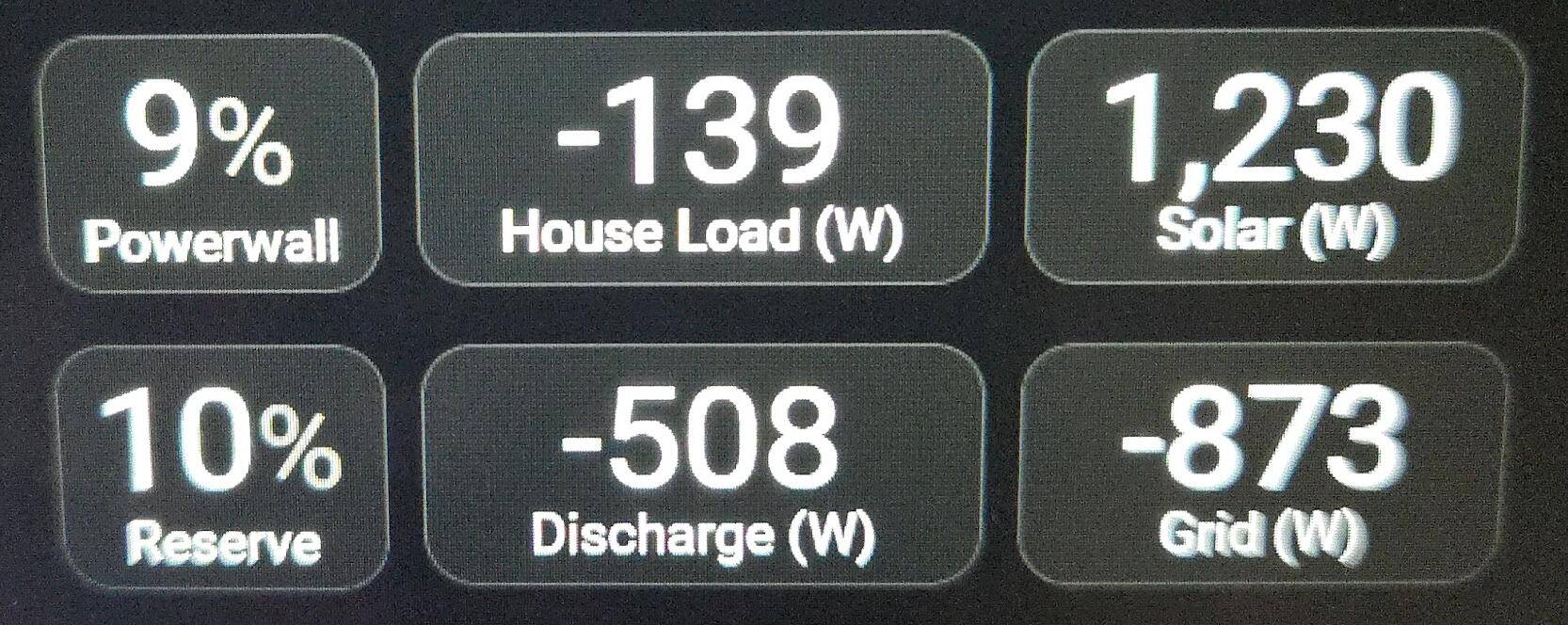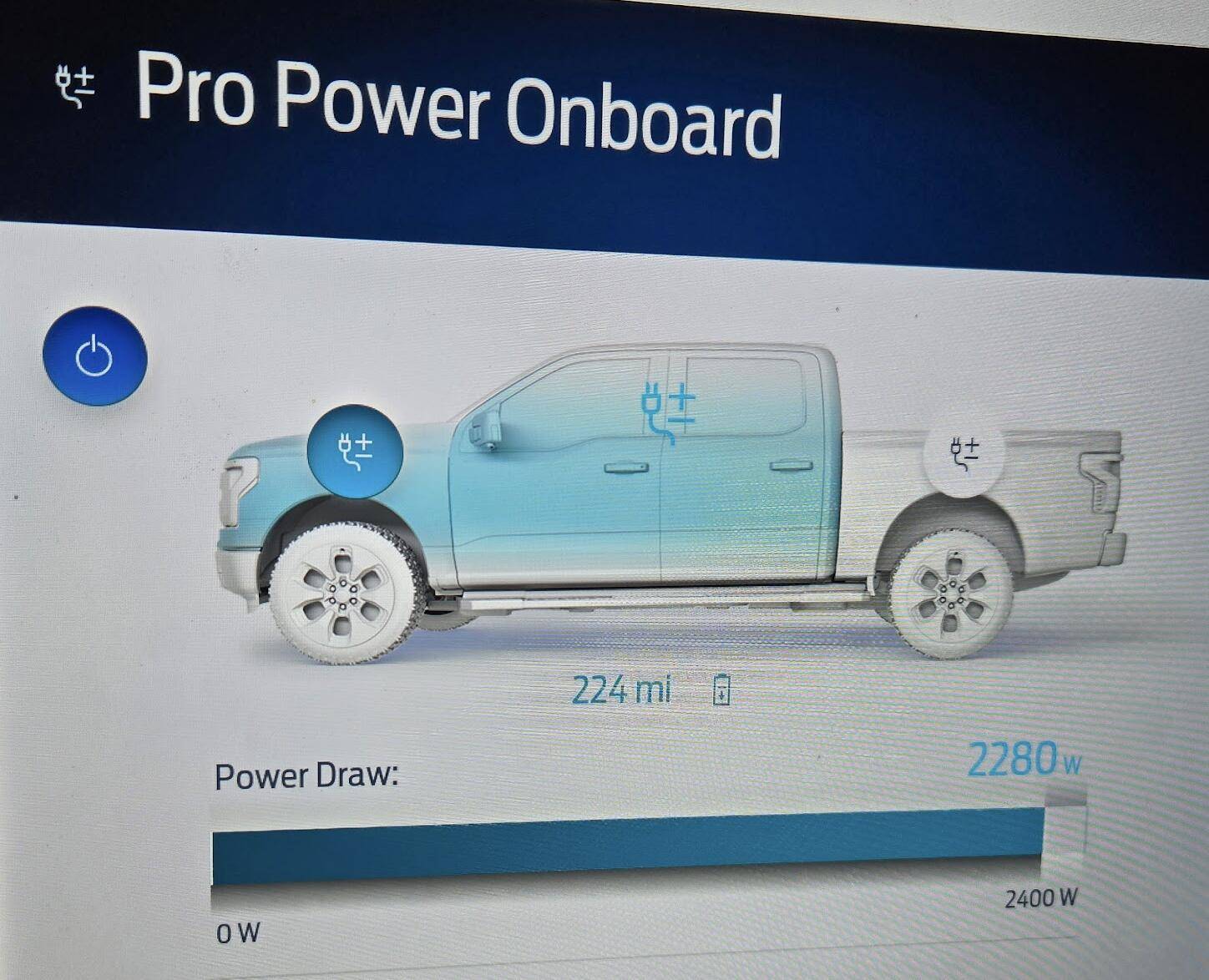hajalie24
Well-known member
- Thread starter
- #1
Hello all,
I recently got Tesla Powerwall 3s which are great, but on weekdays I usually dump the batteries at peak hours and I can only recharge them the next day via solar. I'm worried about outages that may occur when the battery is low and the sun isn't shining. Turns out there is a way (albeit somewhat inefficient) to integrate the truck with powerwalls!
So basically you need a "grid tie inverter" or "microinverter." These take DC input (such as from solar panels or a DC power supply) and generates an AC output that is synchronized to the "grid" (which in the event of an outage is actually my powerwalls)
There are many grid tie inverters you can buy from amazon or other websites, or alternatively you can rig up something from a high quality source like Enphase microinverters. I just went the plug and play solution from amazon (I've attached an image of the product listing so you can find your own.)
Then you need a power supply that matches the voltage range of the inverter. I got two high quality Mean Well 36v DC power supplies. It's important to get a good power supply that has "power factor compensation." I first tried a cheapo PSU without PFC from amazon and my overall efficiency was terrible, like less than 50%. from truck to house. The truck was supplying way more power than the power supply was actually drawing from the AC outlet even before the subsequent AC - DC -AC losses. I learned some new terms "apparent power" vs "real power."
Some things to note:
Here's a screenshot of my house vitals while I was testing this out. My house load is showing negative because I was feeding it more power than I was consuming.


Let me know if you have any questions! Fortunately any outages I've had so far have been at times when the powerwalls were charged up so I haven't had to use this system in a real world situation.. yet.

I recently got Tesla Powerwall 3s which are great, but on weekdays I usually dump the batteries at peak hours and I can only recharge them the next day via solar. I'm worried about outages that may occur when the battery is low and the sun isn't shining. Turns out there is a way (albeit somewhat inefficient) to integrate the truck with powerwalls!
So basically you need a "grid tie inverter" or "microinverter." These take DC input (such as from solar panels or a DC power supply) and generates an AC output that is synchronized to the "grid" (which in the event of an outage is actually my powerwalls)
There are many grid tie inverters you can buy from amazon or other websites, or alternatively you can rig up something from a high quality source like Enphase microinverters. I just went the plug and play solution from amazon (I've attached an image of the product listing so you can find your own.)
Then you need a power supply that matches the voltage range of the inverter. I got two high quality Mean Well 36v DC power supplies. It's important to get a good power supply that has "power factor compensation." I first tried a cheapo PSU without PFC from amazon and my overall efficiency was terrible, like less than 50%. from truck to house. The truck was supplying way more power than the power supply was actually drawing from the AC outlet even before the subsequent AC - DC -AC losses. I learned some new terms "apparent power" vs "real power."
Some things to note:
- Unless you already have batteries, this won't work during a power outage! They're designed to sync with the grid and would turn itself off for safety reasons if the grid is not working properly.
- My overall efficiency is not great, even with a high quality power supply. I'm losing maybe 25% - 33% from what the truck reports and the power actually going into the house. Because I only have the 2.4kW inverter I also had to find a way to current limit one of the power supplies otherwise the truck would trip.
- The powerwall does have MPPT ports, theoretically I can skip the grid tie inverter and use those which might help with efficiency.
- Electricity is 3x more expensive during peak hours so even with losses you still come ahead (though I'll only be using this for emergencies)
- You're essentially simulating a solar panel. Excess power will be consumed by the house first and then stored in the battery or exported to the grid (if the grid is online.)
- This can be useful to offset your house consumption without having to disconnect power first.
- You can also export to the grid if you're so inclined, but I don't think the utility would be happy about that and it might be considered fraud
- If you have the 9.6 kW option, you can get better efficiency (most DC power supplies run better at 240V) and fully use the 9.6 kW! (not just the 7.2kW)
Here's a screenshot of my house vitals while I was testing this out. My house load is showing negative because I was feeding it more power than I was consuming.


Let me know if you have any questions! Fortunately any outages I've had so far have been at times when the powerwalls were charged up so I haven't had to use this system in a real world situation.. yet.

Sponsored
Last edited:

